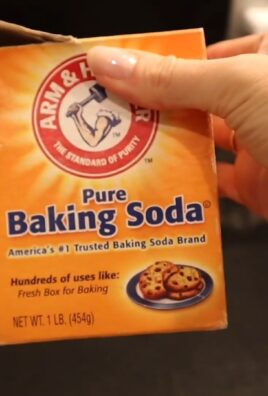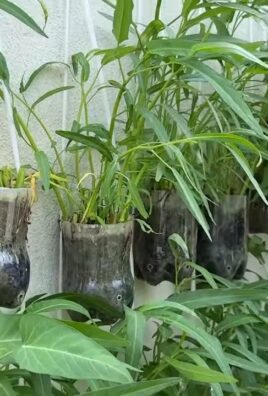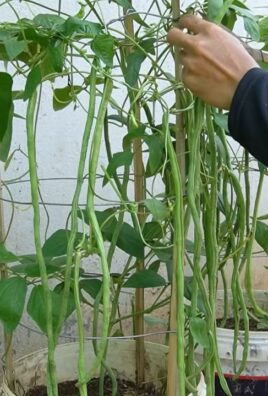Grow Carrots at Home? Absolutely! Imagine plucking vibrant, sweet carrots straight from your own backyard – fresher than anything you’ll find at the grocery store. Sounds like a dream, right? Well, it’s a dream within reach, even if you’re a complete beginner. This isn’t just about planting seeds; it’s about unlocking the secrets to a thriving carrot patch, no matter the size of your garden.
For centuries, carrots have been a staple in diets worldwide, with their cultivation dating back to ancient times. Originally, they weren’t even orange! But through careful selection and breeding, we’ve arrived at the sweet, crunchy root vegetable we know and love. Now, you can continue that legacy by cultivating your own delicious carrots.
Why should you learn to grow carrots at home? Because store-bought carrots simply can’t compare to the flavor and satisfaction of homegrown ones. Plus, you control everything – from the soil to the watering schedule – ensuring a healthy, organic harvest. In this article, I’m going to share my favorite DIY tricks and hacks that will help you avoid common pitfalls and maximize your yield. Get ready to dig in (pun intended!) and discover the joy of growing your own carrots!

DIY Concrete Countertops: A Step-by-Step Guide
Okay, so you’re thinking about concrete countertops? Awesome! They’re durable, stylish, and surprisingly doable as a DIY project. I’m going to walk you through the whole process, from building the mold to the final sealing. Get ready to get your hands dirty!
Materials You’ll Need
Before we dive in, let’s gather our supplies. This is crucial because you don’t want to be halfway through and realize you’re missing something.
* Melamine Boards: This will be used to create the mold. I recommend ¾ inch thick melamine for sturdiness.
* Concrete Mix: Choose a high-strength concrete mix specifically designed for countertops. You can find these at most home improvement stores.
* Reinforcement: Fiber mesh or rebar to add strength and prevent cracking. I prefer fiber mesh for easier handling.
* Concrete Sealer: A food-safe concrete sealer is essential to protect your countertop from stains and moisture.
* Concrete Pigment (Optional): If you want to add color to your countertop, grab some concrete pigment.
* Release Agent: This will help you remove the concrete from the mold. I like using a vegetable oil-based release agent.
* Silicone Caulk: To seal the seams of the mold and prevent leaks.
* Mixing Tools: A concrete mixer (rent one if you don’t have one), buckets, shovels, and a margin trowel.
* Finishing Tools: Trowels (steel and rubber), floats, sponges, sandpaper (various grits), and a concrete grinder/polisher (optional, but recommended).
* Safety Gear: Safety glasses, gloves, and a dust mask are a must! Concrete dust is not your friend.
* Measuring Tools: Tape measure, level, and a square.
* Fasteners: Screws to hold the mold together.
* Wax Paper or Plastic Sheeting: To cover the work surface.
Building the Mold
This is where the magic begins! The mold is essentially a negative of your countertop, so accuracy is key.
1. Measure and Cut the Melamine: Carefully measure the dimensions of your desired countertop. Remember to account for any overhangs or special shapes. Cut the melamine boards to size using a circular saw or table saw. Accuracy is paramount here! Double-check your measurements before cutting.
2. Assemble the Mold: Lay the bottom piece of melamine on a flat, level surface covered with wax paper or plastic sheeting. Attach the side pieces to the bottom piece using screws. Make sure the screws are countersunk so they don’t interfere with the concrete. I like to pre-drill pilot holes to prevent the melamine from splitting.
3. Reinforce the Mold: For larger countertops, you might want to add external bracing to the mold to prevent it from bowing under the weight of the concrete. You can use scrap wood and clamps for this.
4. Seal the Seams: Apply a bead of silicone caulk along all the seams of the mold, both inside and outside. This will prevent the concrete from leaking out. Smooth the caulk with your finger or a caulk smoothing tool. Let the caulk dry completely before moving on.
5. Apply Release Agent: Generously apply the release agent to the inside of the mold. Make sure to cover all surfaces, including the corners. This will make it much easier to remove the concrete countertop from the mold later.
Mixing and Pouring the Concrete
Now for the fun (and messy) part!
1. Prepare the Concrete Mix: Follow the manufacturer’s instructions for mixing the concrete. Add water gradually until you achieve a thick, but pourable consistency. If you’re using concrete pigment, add it to the water before mixing it with the concrete. I usually mix a small batch first to test the color.
2. Pour the First Layer: Pour a layer of concrete into the mold, about one-third of the way up. Vibrate the mold to remove any air bubbles. You can do this by tapping the sides of the mold with a rubber mallet or using a concrete vibrator.
3. Add Reinforcement: Lay the fiber mesh or rebar on top of the first layer of concrete. Make sure the reinforcement is completely embedded in the concrete.
4. Pour the Remaining Concrete: Pour the remaining concrete into the mold, filling it to the top. Again, vibrate the mold to remove any air bubbles.
5. Screed the Surface: Use a screed board (a straight piece of wood or metal) to level the surface of the concrete. Drag the screed board across the top of the mold, removing any excess concrete.
6. Trowel the Surface: Use a steel trowel to smooth the surface of the concrete. Work in small, overlapping strokes. This will help to create a smooth, even finish.
Curing the Concrete
Patience is key here! Proper curing is essential for the strength and durability of your concrete countertop.
1. Cover the Concrete: Cover the concrete with plastic sheeting to prevent it from drying out too quickly.
2. Keep it Moist: Mist the concrete with water several times a day for the first few days. This will help to keep it hydrated and prevent cracking.
3. Curing Time: Allow the concrete to cure for at least 7 days, and preferably 28 days, before removing it from the mold. The longer it cures, the stronger it will be.
Removing and Finishing the Concrete
Almost there! This is where you’ll reveal your masterpiece.
1. Remove the Mold: Carefully remove the screws from the mold. Gently tap the sides of the mold with a rubber mallet to loosen the concrete. Lift the mold pieces away from the concrete.
2. Inspect the Concrete: Check the concrete for any cracks or imperfections. If you find any, you can repair them with a concrete patching compound.
3. Grind and Polish (Optional): If you want a super smooth, polished finish, you can grind and polish the concrete using a concrete grinder/polisher. Start with a coarse grit diamond pad and gradually work your way up to a finer grit. This process can be time-consuming, but it’s worth it if you want a professional-looking finish.
4. Sand the Concrete: If you’re not grinding and polishing, you can sand the concrete with sandpaper to smooth out any rough spots. Start with a coarse grit sandpaper and gradually work your way up to a finer grit.
5. Clean the Concrete: Thoroughly clean the concrete with a concrete cleaner to remove any dust or debris.
Sealing the Concrete
This is the final step, and it’s crucial for protecting your countertop.
1. Apply the First Coat of Sealer: Apply a thin, even coat of concrete sealer to the entire surface of the countertop. Follow the manufacturer’s instructions for application.
2. Allow to Dry: Allow the sealer to dry completely according to the manufacturer’s instructions.
3. Apply Additional Coats: Apply two or three additional coats of sealer, allowing each coat to dry completely before applying the next.
4. Buff the Surface: After the final coat of sealer has dried, buff the surface with a clean cloth to remove any excess sealer.
Installing Your Concrete Countertop
You’ve made it! Time to enjoy your handiwork.
1. Prepare the Cabinets: Make sure your cabinets are level and sturdy.
2. Apply Adhesive: Apply a bead of construction adhesive to the top of the cabinets.
3. Position the Countertop: Carefully lift the concrete countertop and position it on top of the cabinets.
4. Secure the Countertop: Secure the countertop to the cabinets using screws or construction adhesive.
5. Caulk the Seams: Caulk the seams between the countertop and the backsplash or walls.
Maintaining Your Concrete Countertop
With proper care, your concrete countertop will last for years to come.
* Clean Regularly: Clean your concrete countertop regularly with a mild soap and water.
* Avoid Harsh Chemicals: Avoid using harsh chemicals or abrasive cleaners, as they can damage the sealer.
* Wipe Up Spills Immediately: Wipe up spills immediately to prevent staining.
* Use Cutting Boards: Use cutting boards to protect the countertop from scratches.
* Use Hot Pads: Use hot pads to protect the countertop from heat.
* Reseal Periodically: Reseal your concrete countertop every year or two to maintain its protection.
That’s it! You’ve successfully created your own concrete countertop. Enjoy your beautiful and durable new addition to your home! I know it seems like a lot, but trust me, the feeling of accomplishment is totally worth it. Good luck, and happy DIY-ing!

Conclusion
So, there you have it! Growing carrots at home is not only achievable, but it’s also incredibly rewarding. From the vibrant colors to the unparalleled freshness, homegrown carrots offer a taste experience that store-bought varieties simply can’t match. This DIY trick, focusing on proper soil preparation, strategic planting, and consistent watering, unlocks the secret to a bountiful harvest, even in limited spaces.
Why is this a must-try? Because it puts you in control. You know exactly what goes into your food, avoiding potentially harmful pesticides and herbicides. You get to enjoy the satisfaction of nurturing something from seed to table. And, let’s be honest, there’s a certain magic in pulling a perfectly formed, bright orange carrot from the earth that’s hard to beat.
But the fun doesn’t stop there! Feel free to experiment with different carrot varieties. Nantes carrots are known for their cylindrical shape and sweet flavor, while Chantenay carrots are shorter and sturdier, making them ideal for heavier soils. Rainbow carrots, with their vibrant hues of purple, yellow, and red, add a splash of color to your garden and your plate.
Consider companion planting to further enhance your carrot-growing experience. Onions and garlic can deter carrot root flies, while rosemary and sage can help repel other pests. Marigolds are also a great addition, adding beauty and attracting beneficial insects.
For those with limited space, container gardening is an excellent option. Choose a deep container (at least 12 inches) and use a well-draining potting mix. Dwarf carrot varieties are particularly well-suited for containers.
Don’t be afraid to get your hands dirty and embrace the learning process. Gardening is all about experimentation and adapting to your specific environment. Observe your plants closely, adjust your watering schedule as needed, and don’t be discouraged by occasional setbacks. Every challenge is an opportunity to learn and improve.
We wholeheartedly encourage you to try this DIY trick for growing carrots at home. It’s a simple, cost-effective, and incredibly satisfying way to enjoy fresh, healthy produce. And most importantly, it connects you to the natural world in a meaningful way.
Once you’ve harvested your first batch of homegrown carrots, we’d love to hear about your experience! Share your photos, tips, and challenges in the comments below. Let’s create a community of carrot-growing enthusiasts and inspire others to embrace the joys of gardening. Happy growing!
Frequently Asked Questions (FAQ)
What is the best time of year to plant carrots?
The best time to plant carrots depends on your climate. In general, carrots are a cool-season crop, meaning they thrive in temperatures between 60°F and 70°F. For most regions, this means planting in early spring (2-3 weeks before the last expected frost) or late summer (for a fall harvest). In warmer climates, you can plant carrots throughout the fall and winter. Check your local planting calendar for specific dates. Successive planting, sowing a small batch of seeds every 2-3 weeks, will ensure a continuous harvest throughout the growing season.
What kind of soil is best for growing carrots?
Carrots need loose, well-drained soil that is free of rocks and clumps. Rocky or compacted soil can cause carrots to become misshapen or stunted. Sandy loam soil is ideal. Before planting, amend your soil with compost or well-rotted manure to improve drainage and fertility. Avoid using fresh manure, as it can cause forking. The pH of the soil should be between 6.0 and 6.8. If your soil is heavy clay, consider growing carrots in raised beds or containers.
How deep should I plant carrot seeds?
Carrot seeds are very small and should be planted shallowly, about ¼ to ½ inch deep. Sow the seeds thinly in rows, spacing them about 1-2 inches apart. Gently cover the seeds with soil and water thoroughly. Keep the soil consistently moist until the seeds germinate, which usually takes 7-21 days. You can use a light layer of mulch, such as straw or grass clippings, to help retain moisture and suppress weeds.
How often should I water my carrots?
Carrots need consistent moisture to grow properly. Water deeply and regularly, especially during dry periods. Aim for about 1 inch of water per week. Avoid overwatering, as this can lead to root rot. Check the soil moisture regularly and adjust your watering schedule accordingly. A good rule of thumb is to water when the top inch of soil feels dry to the touch.
How do I thin carrot seedlings?
Thinning is essential for giving carrots enough space to develop. Once the seedlings are about 2 inches tall, thin them to 1-2 inches apart. When they are about 4 inches tall, thin them again to 3-4 inches apart. Gently pull out the unwanted seedlings, being careful not to disturb the roots of the remaining plants. You can eat the thinned seedlings as microgreens.
What are some common pests and diseases that affect carrots?
Carrot root flies are a common pest that can damage carrot roots. They lay their eggs near the base of the plants, and the larvae burrow into the roots, causing them to become distorted and inedible. To prevent carrot root flies, use row covers to protect your plants, practice crop rotation, and avoid planting carrots in the same spot year after year. Other common pests include aphids, flea beetles, and nematodes. Diseases that can affect carrots include leaf blight and powdery mildew.
How do I know when my carrots are ready to harvest?
Carrots are typically ready to harvest 60-80 days after planting, depending on the variety. The size of the carrot is a good indicator of maturity. Check the seed packet for the expected size of the mature carrots. You can also gently loosen the soil around the top of the carrot and peek to see if it’s the size you want. To harvest, gently pull the carrots from the soil, twisting them slightly as you pull. If the soil is dry, water it beforehand to make harvesting easier.
Can I grow carrots in containers?
Yes, you can definitely grow carrots in containers! Choose a container that is at least 12 inches deep and has drainage holes. Use a well-draining potting mix and select dwarf or shorter carrot varieties. Container-grown carrots may need more frequent watering and fertilizing than those grown in the ground.
How do I store harvested carrots?
To store carrots, remove the green tops and gently brush off any excess soil. Do not wash them. Store the carrots in a cool, dark, and humid place, such as the refrigerator or a root cellar. You can wrap them in a damp paper towel or store them in a plastic bag with a few holes for ventilation. Carrots can last for several weeks or even months when stored properly.
Can I eat the carrot greens?
Yes, carrot greens are edible and nutritious! They have a slightly bitter taste, similar to parsley. You can use them in salads, soups, stews, or pesto. Be sure to wash them thoroughly before using them. Some people are sensitive to carrot greens, so start with a small amount to see how you react.




Leave a Comment